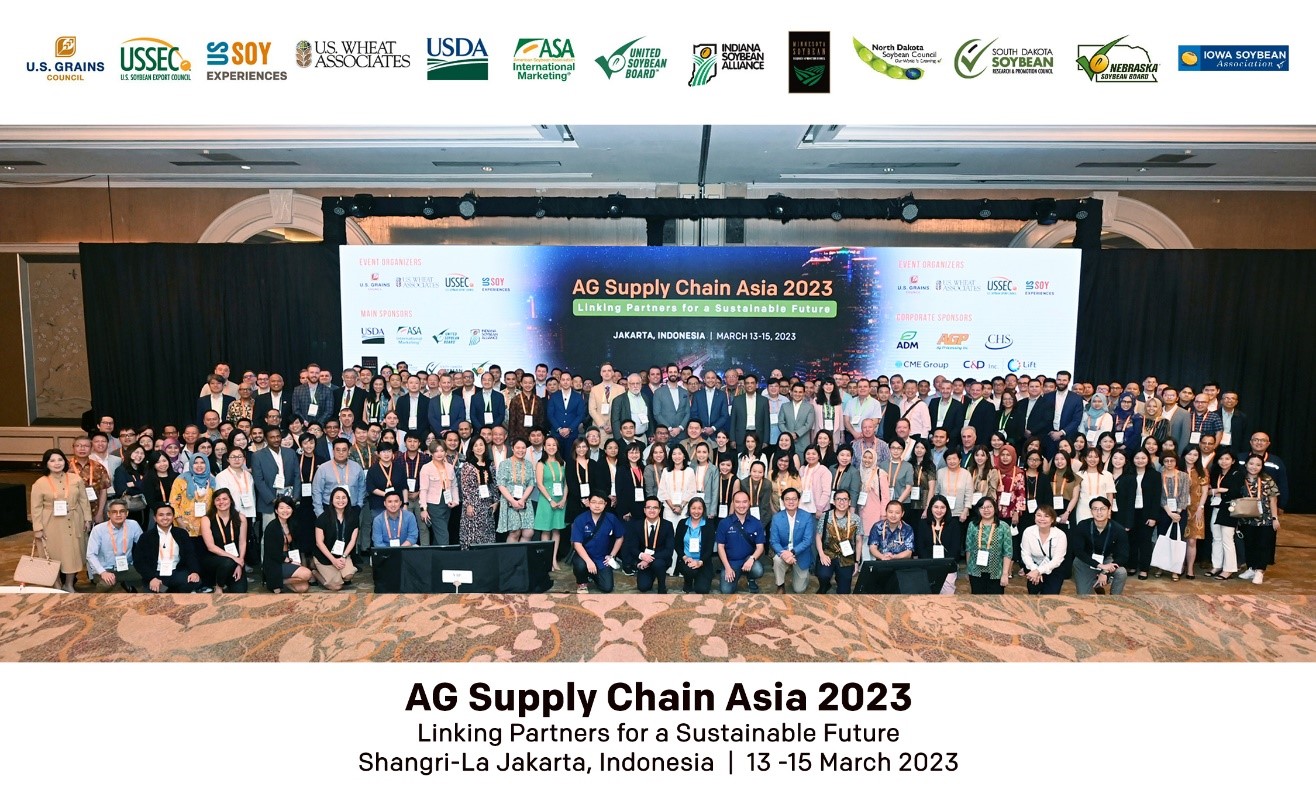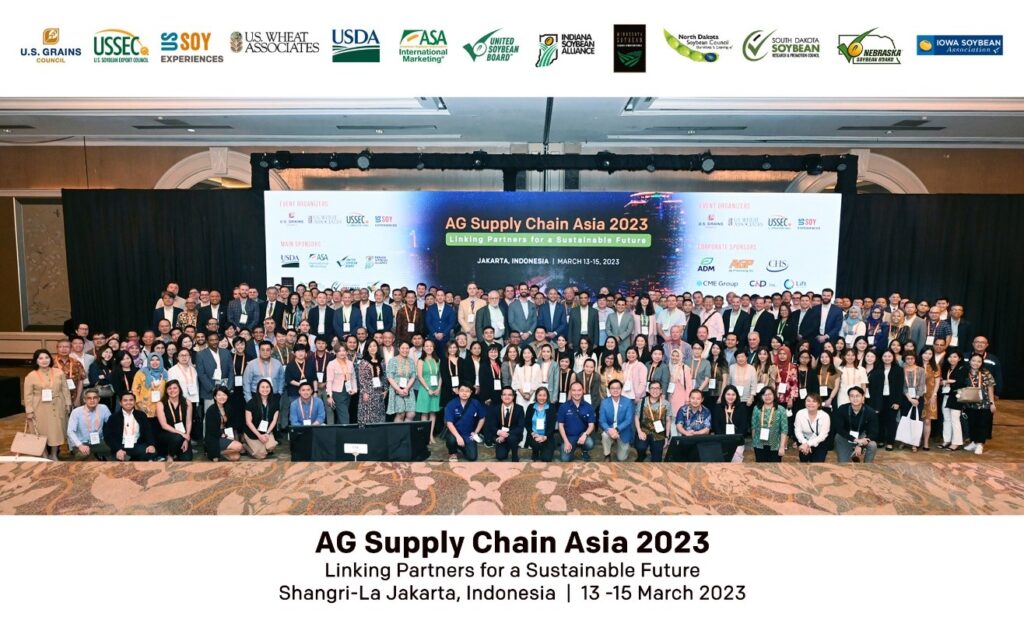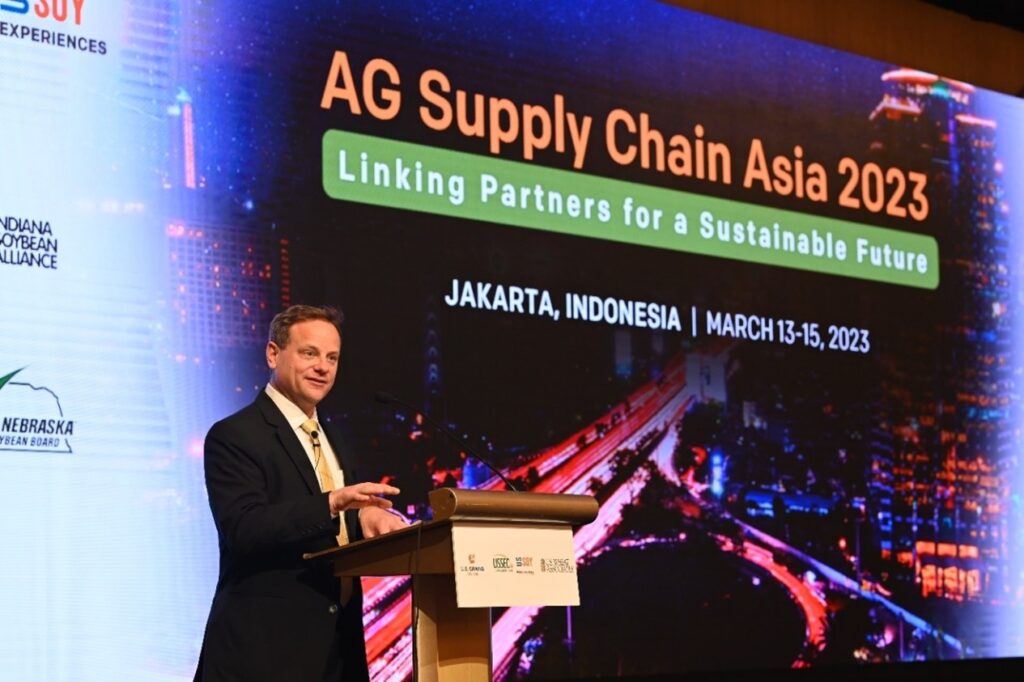Ag Supply Chain Updates Offer Market Perspective and Direction for Southeast Asia
- Category:
- In The News
- Market Information

By the middle of the marketing year, global commodity prices can fluctuate widely in response to weather events. Buyers look well into the future to ensure their soy and grain requirements will be covered as harvest wraps up in the southern hemisphere and planting draws closer in the northern hemisphere.
To help agricultural supply chain stakeholders in Southeast Asia navigate this time of year, USSEC partners with the U.S. Grains Council and U.S. Wheat Associates to host Ag Supply Chain Asia. The annual conference, funded in part by the soy checkoff, provides in-depth market perspectives and strategic direction to the food and feed industries in the region. The 2023 conference was held in mid-March in Jakarta, Indonesia.
“More than 330 participants representing about 170 companies and 17 nationalities attended Ag Supply Chain Asia 2023,” reports Timothy Loh, USSEC regional director for Southeast Asia. “The conference provided a valuable opportunity to share the advantages of U.S. Soy and facilitate business opportunities for suppliers and customers.”
A steady supply of major agricultural commodities like soybeans, corn and wheat promotes ongoing security, stability and economic growth in Southeast Asia, according to Kate Rebholz, Chargé d’Affaires, U.S. Mission to the Association of Southeast Asian Nations, who opened the conference. She noted that these products undergird the region’s food and feed manufacturing industries.
Conference attendees included representatives from regional feed and livestock companies, soy processors, food and beverage manufacturers, commodity traders, exporters, international shipping companies and global logistics providers. They received first-hand updates on the status of the U.S. soybean, corn and wheat crops.
“Southeast Asia is the fourth-largest regional export market for U.S. Soy,” Loh says. “And the U.S. claims about 50% market share for whole soybeans and about 12% of soybean meal imports. Pin the region, according to the latest trade data. Events like this allow us to emphasize the nutritional value and sustainability of U.S. Soy.” Experts and panel discussions covered sustainability, long-term market outlooks, global supply and demand outlooks, container shipping, livestock nutrition, logistics and more. During networking opportunities, 18 U.S. Soy exporters connected with current and potential customers.
“The conference lived up to the theme, ‘Linking Partners for a Sustainable Future,’ as we addressed trade issues and sustainability and fostered relationships between U.S. Soy and our customers,” Loh adds. “USSEC has become a well-known, respected entity in the agricultural community in Southeast Asia, and buyers associate the benefits and assistance from USSEC activities as an incentive to buy U.S. soybeans and soy products.”
This year’s event was supported by the Indiana Soybean Alliance, the Iowa Soybean
Association, the Minnesota Soybean Research and Promotion Council, the Nebraska Soybean Board, the North Dakota Soybean Council and the South Dakota Soybean Research and Promotion Council, in addition to support from the national soy checkoff.
This story was partially funded by U.S. Soy farmers, their checkoff and the soy value chain.

